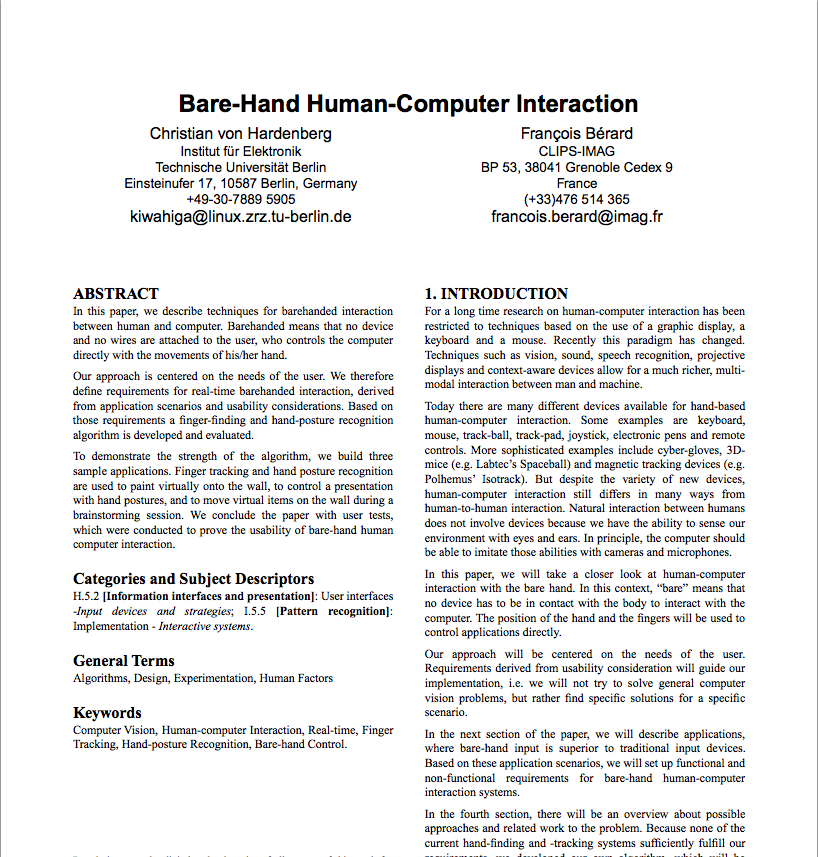
In this paper, we describe techniques for barehanded interaction between human and computer. Barehanded means that no device and no wires are attached to the user, who controls the computer directly with the movements of his/her hand.
Our approach is centered on the needs of the user. We therefore define requirements for real-time barehanded interaction, derived from application scenarios and usability considerations. Based on those requirements a finger-finding and hand-posture recognition algorithm is developed and evaluated. To demonstrate the strength of the algorithm, we build three sample applications. Finger tracking and hand posture recognition are used to paint virtually onto the wall, to control a presentation with hand postures, and to move virtual items on the wall during a brainstorming session. We conclude the paper with user tests, which were conducted to prove the usability of bare-hand human computer interaction.